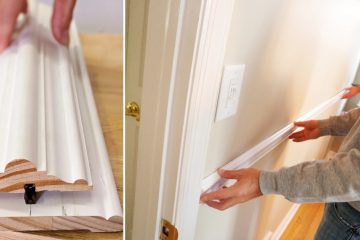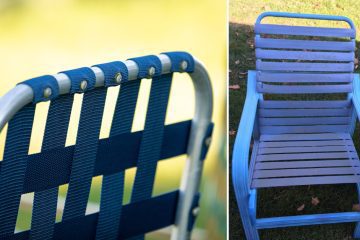We understand the frustration of encountering a small hole in a beloved cane chair. Cane chairs are beautiful and often hold sentimental value, making it essential to preserve their integrity. Fortunately, fixing a small hole in a cane chair is a straightforward process that can be accomplished with the right tools and techniques. In this comprehensive guide, we will walk you through the steps on how to fix a small hole in a cane chair to its former glory.
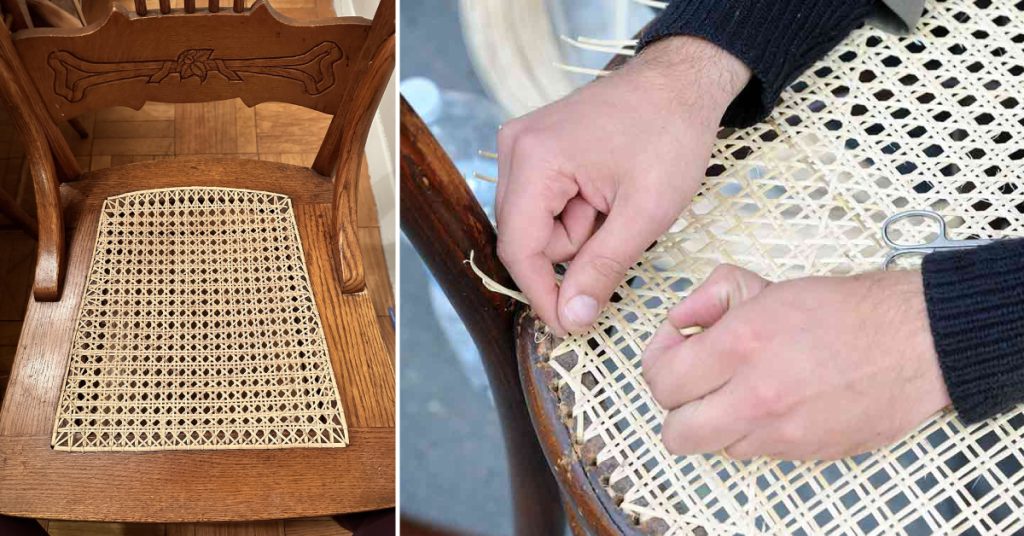
Key Takeaways:
- Cane chairs can develop small holes over time
- Fixing these holes is a straightforward process with the right tools and techniques
- Proper repair helps preserve the chair’s beauty and value
Preparation
Before beginning the repair process, gather the following materials:
- Matching cane webbing or cane strands
- Wood glue or hide glue (recommended)
- Sharp utility knife or scissors
- Awl or small flat-head screwdriver
- Fine-grit sandpaper
- Paintbrush or rag (for staining/finishing)
Additionally, ensure that the area around the hole is clean and free from debris. Lightly sand the surrounding area to remove any loose fibers or rough edges.
7 Faithful Steps for How to Fix a Small Hole in a Cane Chair
Here are seven steps to follow for how to fix a small hole in a cane chair:
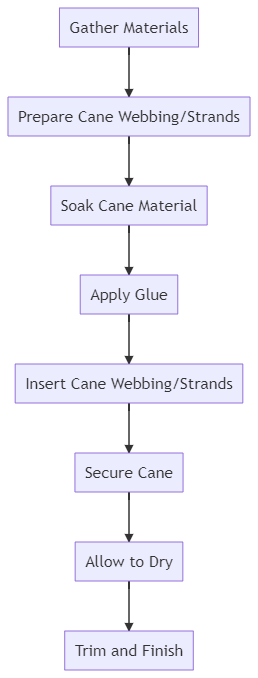
Step 1: Prepare the Cane Webbing or Strands
If you have access to pre-woven cane webbing that matches the existing cane on your chair, cut a piece slightly larger than the hole, allowing for an overlap of approximately 1-2 inches on all sides. Alternatively, if you are working with individual cane strands, measure and cut several strands to the appropriate length, allowing for extra length to tuck under the existing cane.
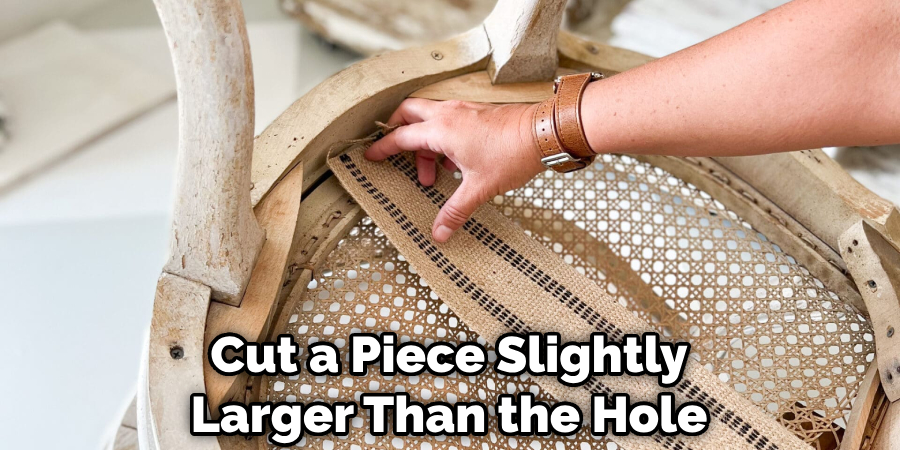
Step 2: Soak the Cane Material
Soak the cane webbing or strands in lukewarm water for approximately 15-20 minutes. This will make the cane more pliable and easier to work with, reducing the risk of breakage during the repair process.
Step 3: Apply Glue
Apply a small amount of wood glue or hide glue (recommended for its longer working time) around the edges of the hole. Hide glue is preferred as it is water-soluble, making it easier to remove the cane in the future if necessary.
Step 4: Insert the Cane Webbing or Strands
If using pre-woven cane webbing, position it over the hole, aligning the weave pattern with the existing cane. Gently press the webbing into the glue, ensuring it adheres to the surrounding area. If working with individual strands, weave them through the existing cane, following the original pattern as closely as possible.
Step 5: Secure the Cane
Once the cane webbing or strands are in place, use an awl or small flat-head screwdriver to tuck the excess cane material under the existing cane. Apply gentle pressure to ensure a smooth and secure fit.
Step 6: Allow to Dry
Allow the glue to dry completely, typically overnight or as recommended by the manufacturer’s instructions.
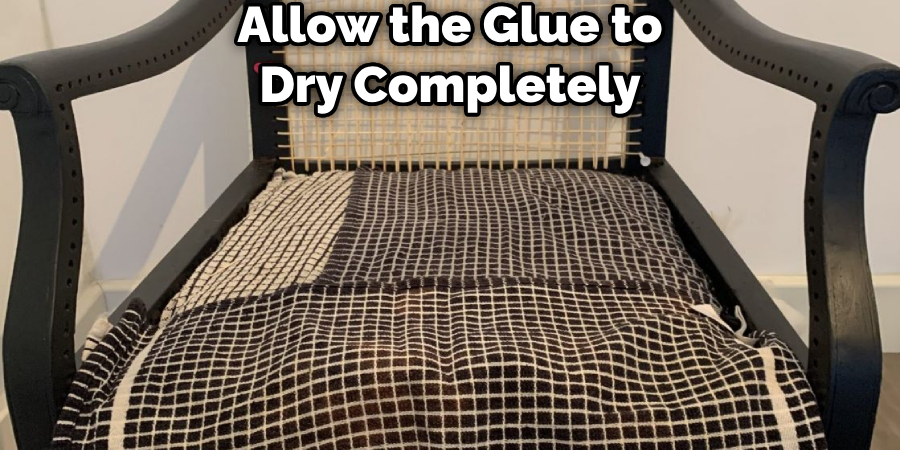
Step 7: Trim and Finish (Optional)
If desired, use a sharp utility knife or scissors to trim any excess cane material that may be protruding from the repair area. Lightly sand the repaired area to blend it seamlessly with the surrounding cane.
Consider staining or finishing the repaired area to match the existing cane for a perfect match. Use a paintbrush or rag to apply a thin layer of stain or finish, blending it into the surrounding area.
FAQs About How to Fix a Small Hole in a Cane Chair
What Kind of Glue Do You Use on a Cane Chair?
It’s best to use wood glue for general repairs when repairing a cane chair due to its strong bond and ease of use. Epoxy glue is also suitable for its resistance to moisture and temperature changes, while superglue can be used for small, delicate repairs. Before gluing, ensure that the surfaces are clean and free of old adhesive, and follow the specific instructions provided by the glue manufacturer for optimal results.
What is the Best Glue to Repair Chairs?
When repairing chairs, the best glue depends on factors like existing glue, joint condition, and desired properties. For antique chairs, hide glue is recommended, while yellow glue like Titebond 2 or 3 works well for newer chairs with tight joints. Epoxy is suitable for worn joints and gap filling, and polyurethane glue, such as Gorilla Wood Glue, is an effective alternative for chair repairs, offering good performance and strength. Each type of glue has its advantages and is suitable for different chair repair scenarios.
What is the Best Glue for Rattan Repair?
When it comes to repairing rattan furniture, popular glue options include E6000, Gorilla Glue, Titebond Original Wood Glue, and hot glue guns. These glues are known for their ability to dry clear, hold up to weather changes, and adhere well to rattan surfaces. However, it’s essential to consider the specific repair needs and the condition of the furniture before choosing the most suitable glue for the job.
Conclusions
With patience and attention to detail, you can successfully repair a small hole in your cane chair, preserving its beauty and ensuring many more years of enjoyment. Remember, proper care and maintenance, such as periodic cleaning and waxing, can help prevent future damage and extend the lifespan of your cherished furniture.

